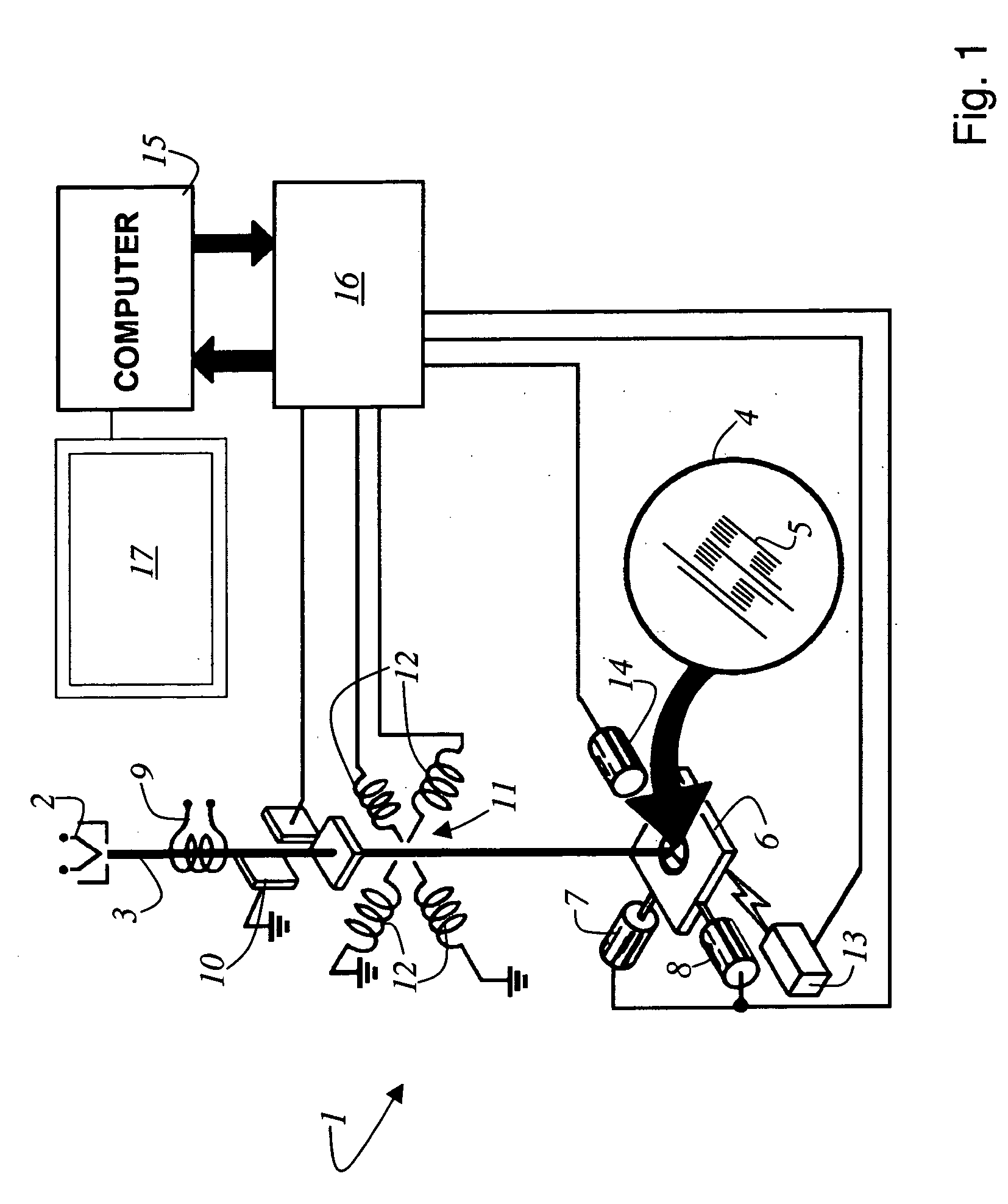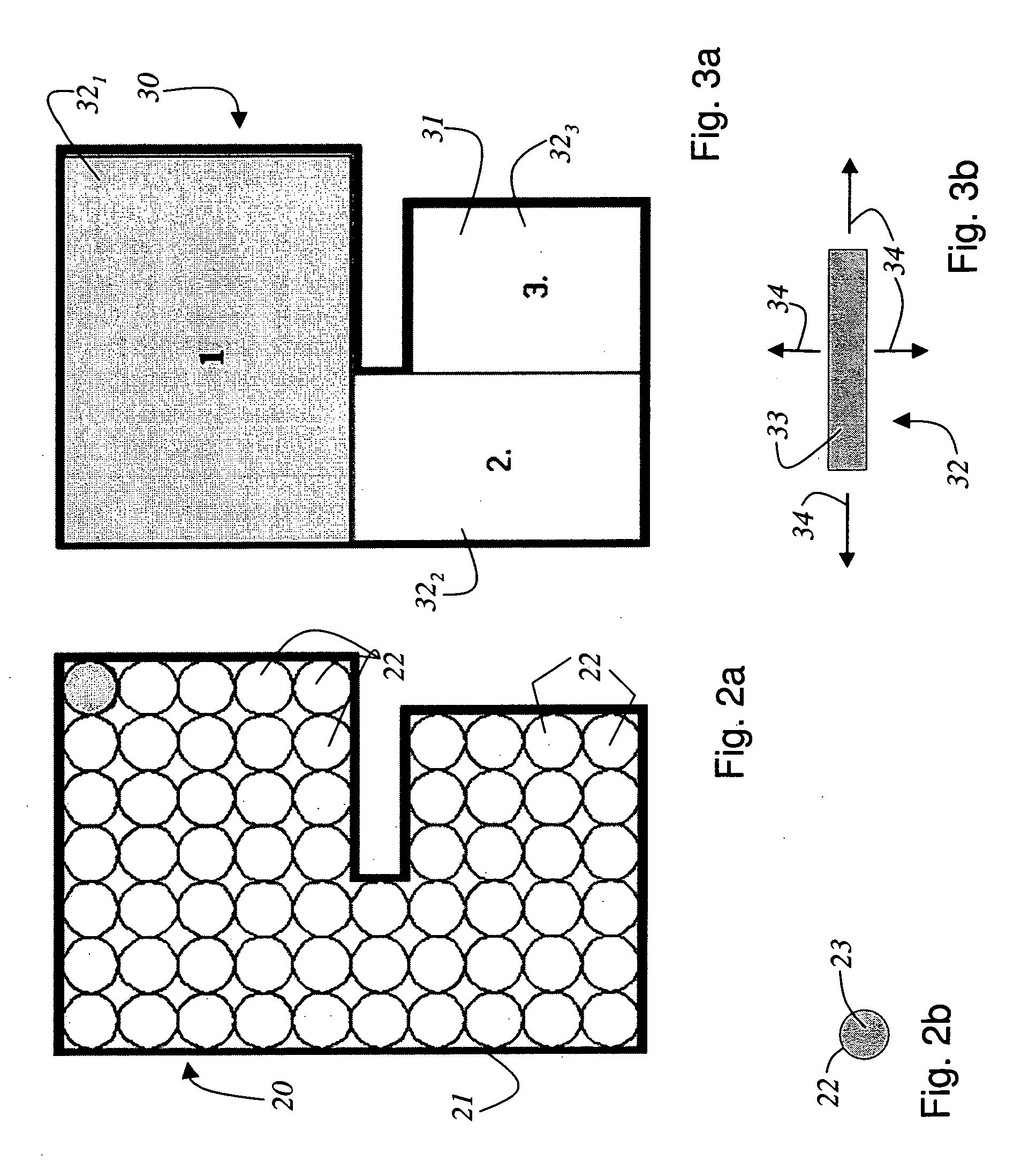Method for reducing the fogging effect
a proximity effect and electron beam technology, applied in photomechanical equipment, instruments, nuclear engineering, etc., can solve the problems of insufficient cd control with an e-beam, high time-consuming experiment and pattern evaluation, and limited methods, so as to achieve better results and reduce dimensional errors
- Summary
- Abstract
- Description
- Claims
- Application Information
AI Technical Summary
Benefits of technology
Problems solved by technology
Method used
Image
Examples
Embodiment Construction
[0059]FIG. 1 shows a block diagram of an e-beam lithographic system 1. The e-beam lithographic system 1 has source of electrons 2 which emits an e-beam 3. The specification mentions the use of an e-beam 3 only. Nevertheless, it has to be understood that the invention is not limited to e-beams only. The invention can be used with particle beams in general, which are applicable to write a pattern 5 on substrate 4. The substrate 4 itself is placed in stage 6 which can be moved by motors 7 and 8 in a plane which is spanned by the X-coordinate X and the Y-coordinate Y. The e-beam 3 passes beam alignment coil 9 after the emerge from the e-beam source 2. After the beam alignment coil 9, in the direction of e-beam 3 propagation, a beam blanking unit 10 is provided. After that the e-beam 3 reaches a magnetic deflection unit 11, which comprises in general four magnetic coils 12. After that the e-beam 3 is directed to the substrate 4. As already mentioned the substrate 4 is positioned on the s...
PUM
| Property | Measurement | Unit |
|---|---|---|
| primary energy | aaaaa | aaaaa |
| width | aaaaa | aaaaa |
| width | aaaaa | aaaaa |
Abstract
Description
Claims
Application Information
 Login to View More
Login to View More - R&D
- Intellectual Property
- Life Sciences
- Materials
- Tech Scout
- Unparalleled Data Quality
- Higher Quality Content
- 60% Fewer Hallucinations
Browse by: Latest US Patents, China's latest patents, Technical Efficacy Thesaurus, Application Domain, Technology Topic, Popular Technical Reports.
© 2025 PatSnap. All rights reserved.Legal|Privacy policy|Modern Slavery Act Transparency Statement|Sitemap|About US| Contact US: help@patsnap.com



